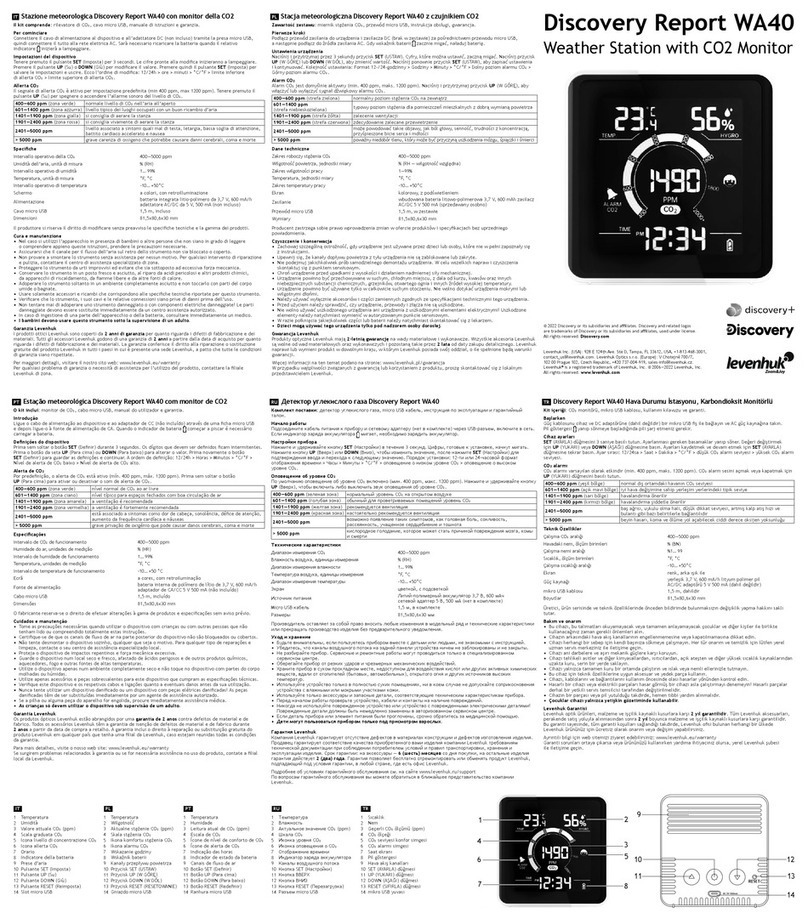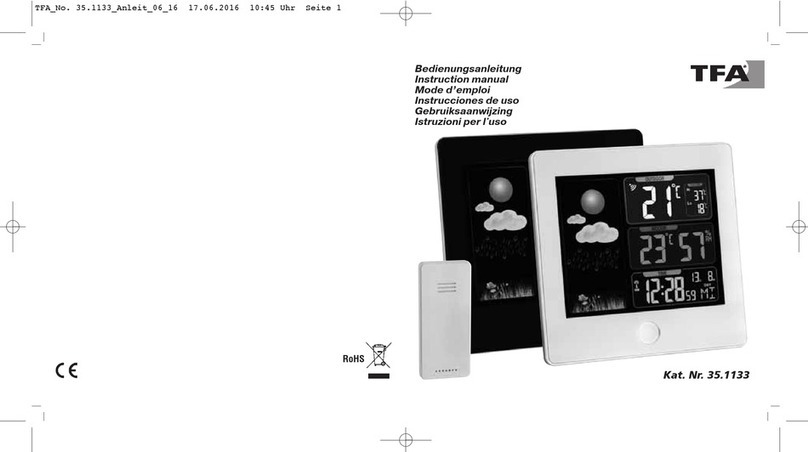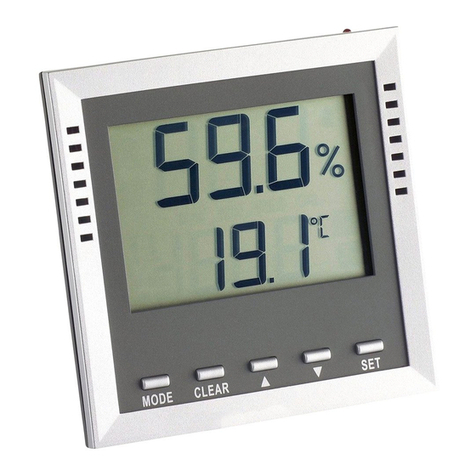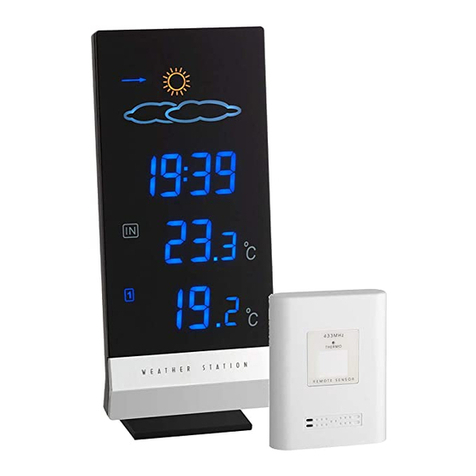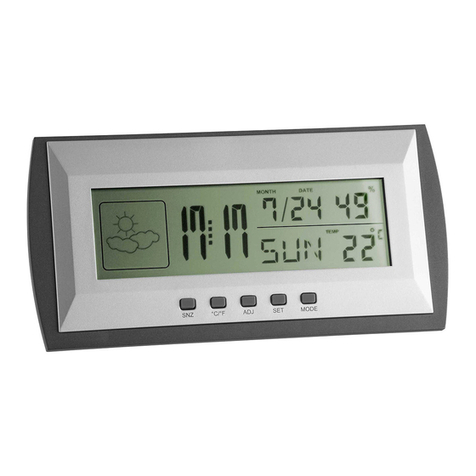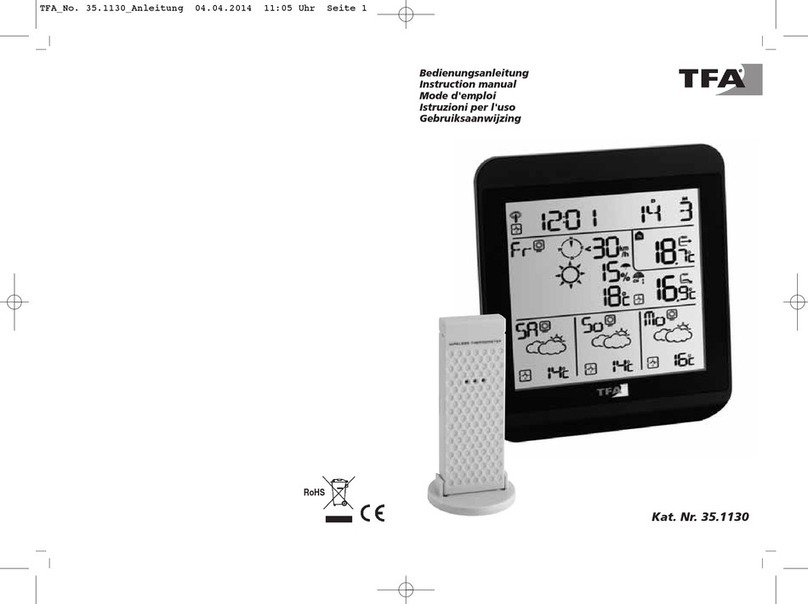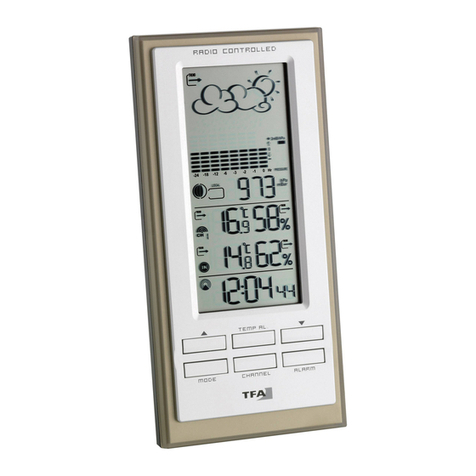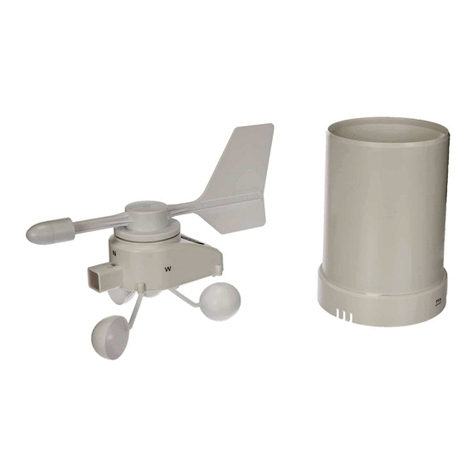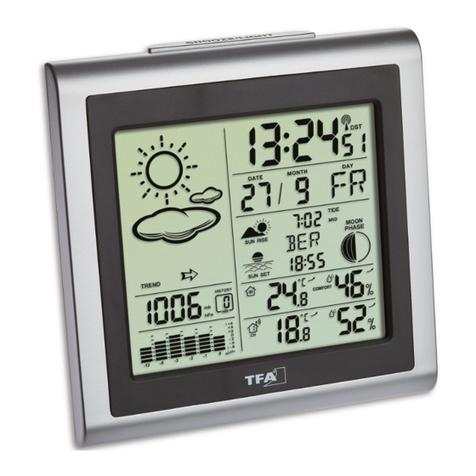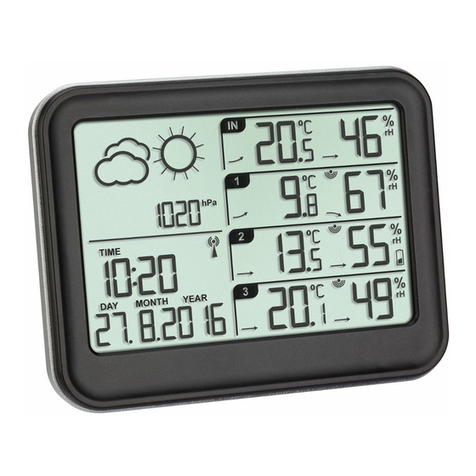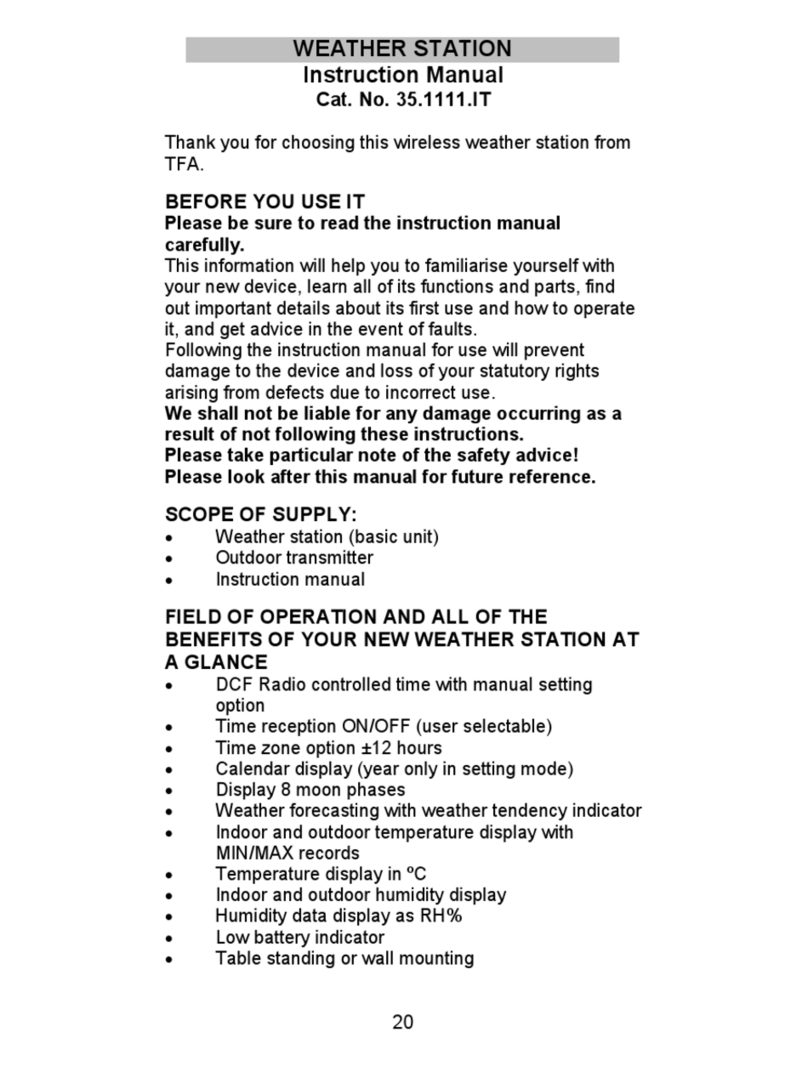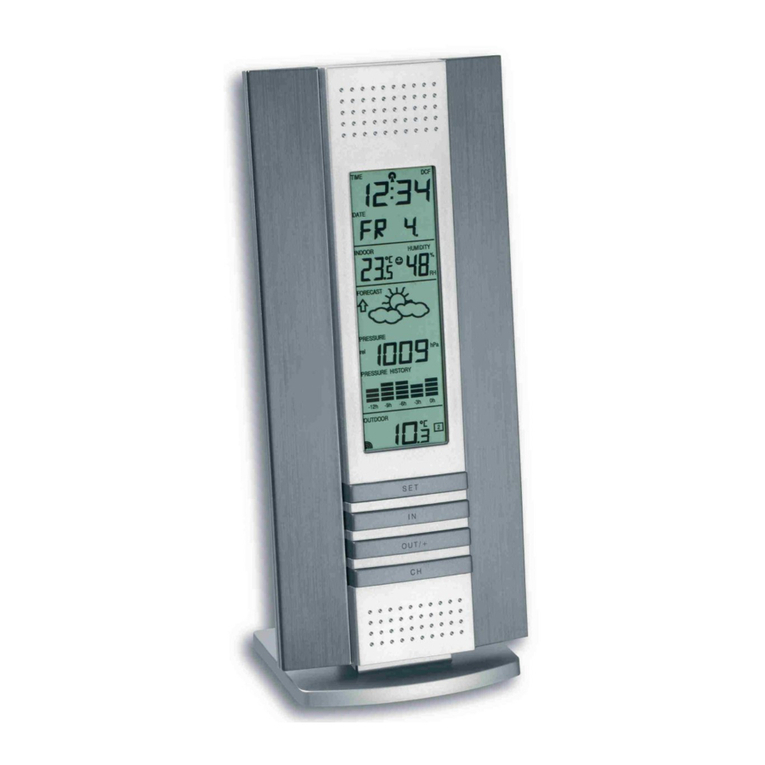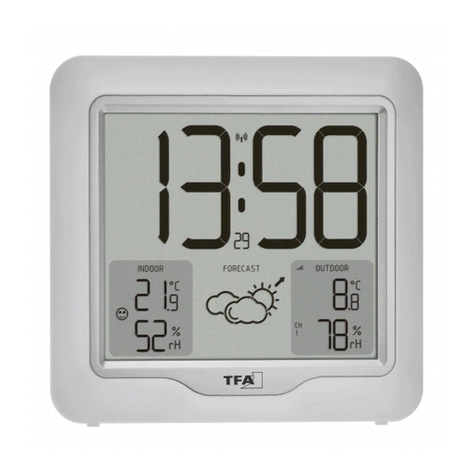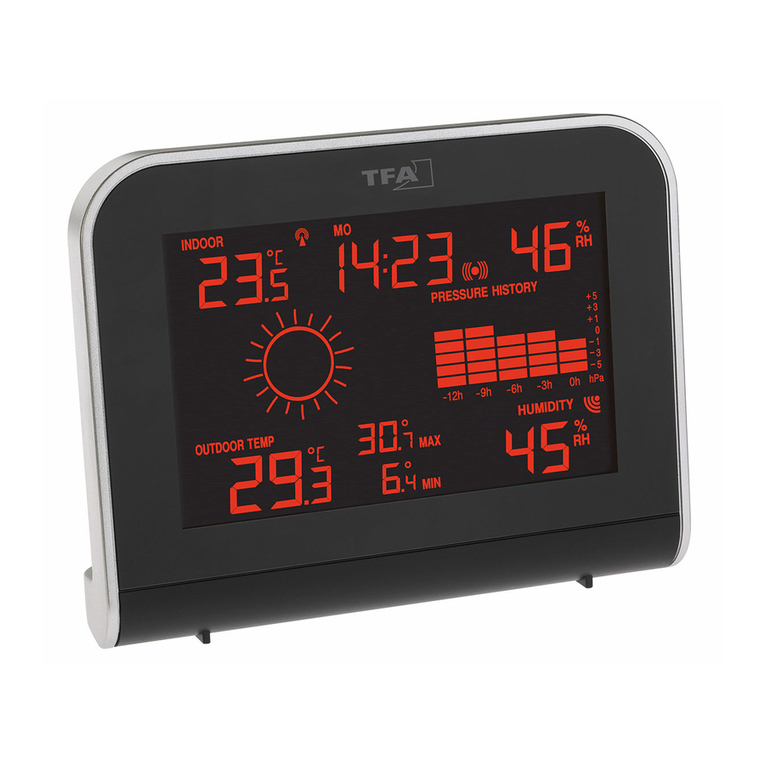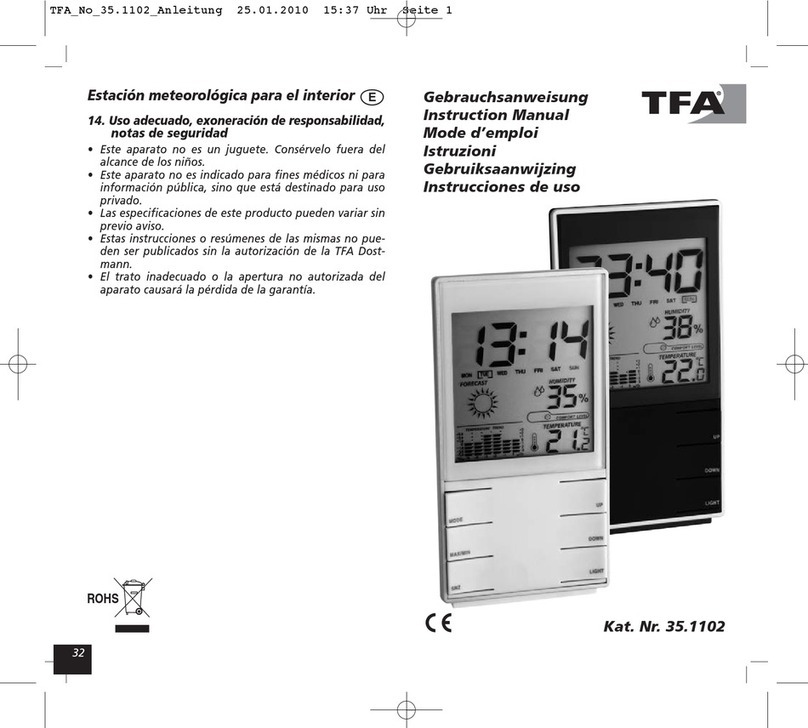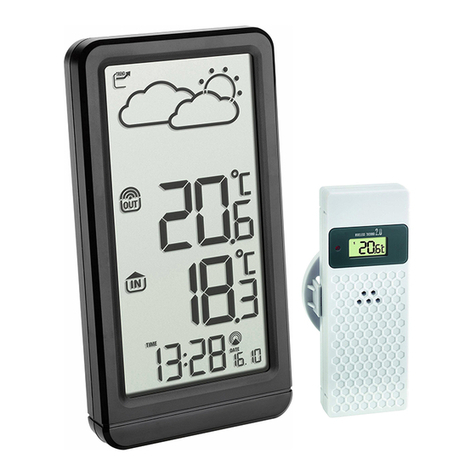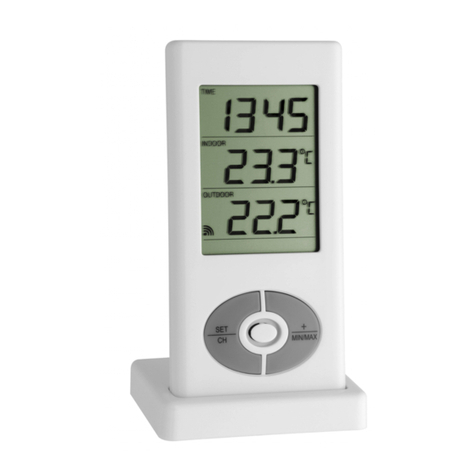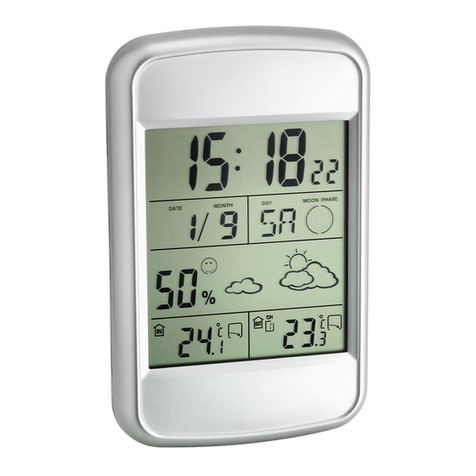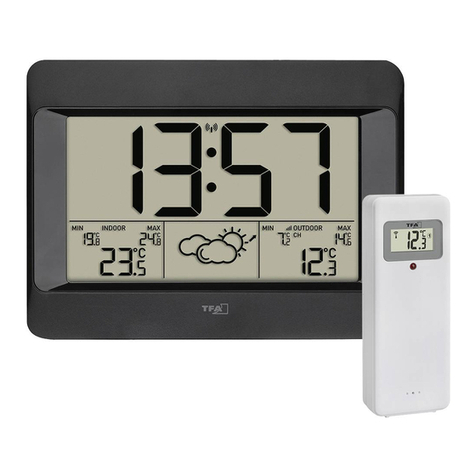2524
SUN - Wireless weather station
SUN - Wireless weather station
5.4 Setting of the temperature unit
•
Press the
▼
button to change between °C (Celsius) or °F (Fahrenheit) as tempera-
ture unit.
5.5 Reset of the max-min values
•
The maximum and minimum values are automatically reset at midnight.
•
Press and hold the
▲
button for three seconds to reset the maximum and minimum
values to the current outdoor temperature manually.
6. Weather forecast symbols (Fig. 3)
•
There are 4 different weather symbols (sunny, partly cloudy, cloudy, rainy)
•
The weather forecast relates to a range of 12 to 24 hours and indicates only a gen-
eral weather trend. For example, if the current weather is cloudy and the rain icon
is displayed, it does not mean the product is faulty because it is not raining. It sim-
ply means that the air pressure has dropped and the weather is expected to get
worse but not necessarily rainy.
•
The sun symbol also appears at night if there is a starry night.
7. Positioning and fixing of the basic station and the outdoor transmitter
•
Choose a shady and dry position for the outdoor transmitter. (Direct sunshine falsi-
fies the measurement and continuous humidity strains the electronic components
needlessly).
•
Place the basic station in the living room with the table stand (fold out). Avoid the
vicinity of any interfering field like computer monitors or TV sets and solid metal
objects.
•
Check the transmission of the signal from the outdoor transmitter to the basic
station (transmission range of up to 60 m free field). Within ferro-concrete rooms
(basements, superstructures), the received signal is naturally weakened.
•
If necessary choose another position for the outdoor transmitter and/or basic
station.
•
Is the transmission successful, you can wall mount the transmitter.
5.2 Setting of the alarm
•
Press and hold the ALARM button.
•
AL and 6:00 (default) appear on the display.
•
The hour digits will be flashing. Press the
▲
or
▼
button to adjust the hours.
•
Press the ALARM button again and you can adjust the minutes with the
▲
or
▼
but-
ton.
•
Confirm the setting with the ALARM button.
•
On the display the symbol for snooze and 10 (default) will be flashing.
•
Press the
▲
or
▼
button to adjust the minutes (1-60) for the snooze interval in the
same way.
•
Confirm the setting with the ALARM button.
•
The current time appears on the display.
•
Press the ALARM button again, to activate the alarm.
•
The alarm symbol appears on the display.
•
When the alarm time is reached, the alarm signal will sound.
•
The alarm symbol will be flashing.
•
Press any button to stop the alarm.
•
If the alarm is not stopped manually, the alarm will automatically turn off after one
minute and will be reactivated at the same time.
•
When the alarm signal sounds, press the light button on the front or the LIGHT/SNZ
button at the back and the snooze function will be activated.
•
Zz and the alarm symbol will be flashing on the display.
•
The alarm is interrupted for the duration of your set minutes for the snooze inter-
val.
•
Press the ALARM button and the snooze function is deactivated
•
Press the Alarm button again and the alarm function is deactivated.
5.3 Display
•
Press the MODE button, to show the alarm time.

